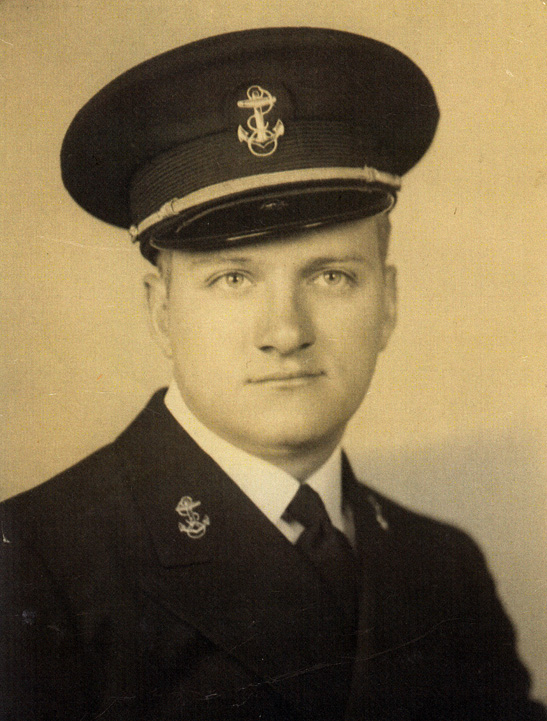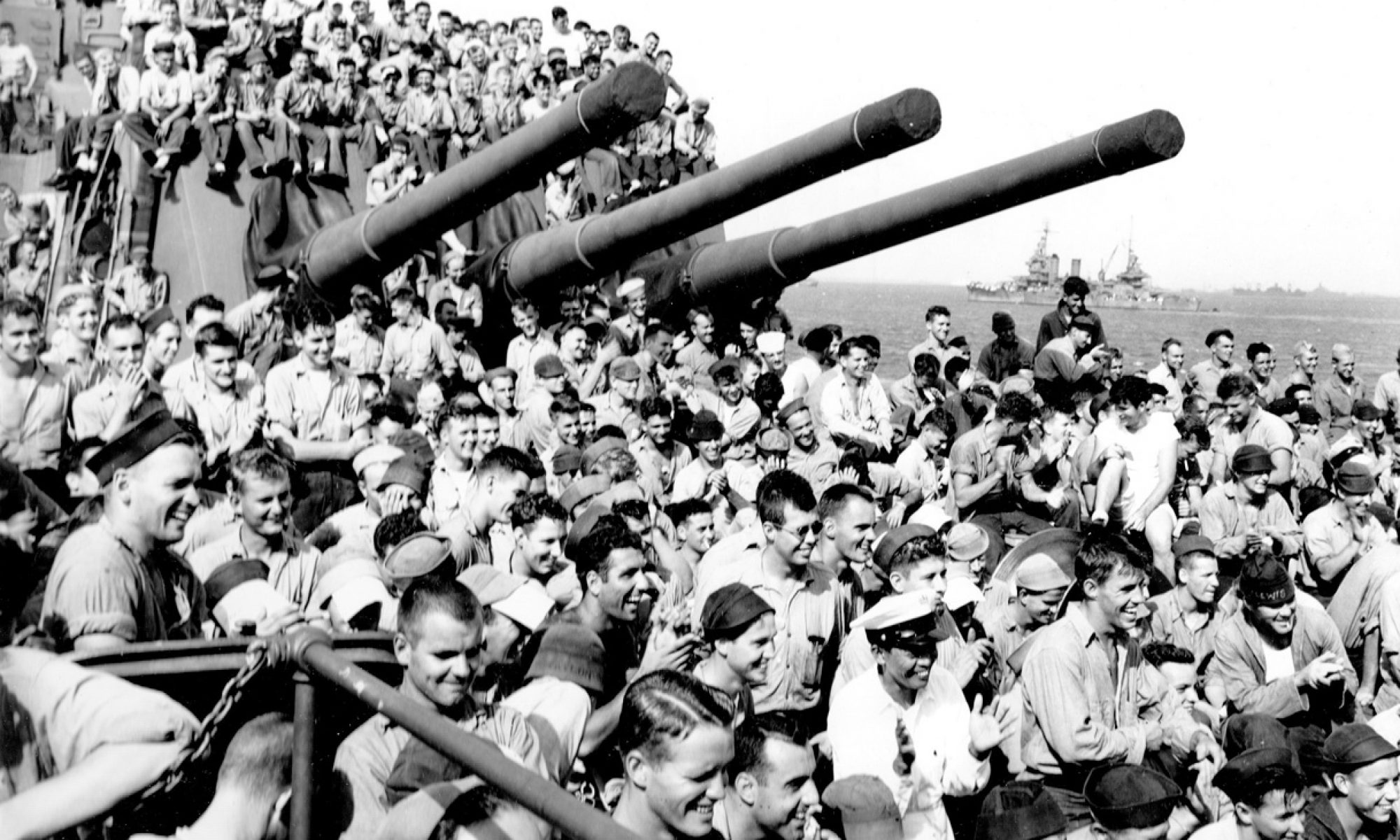1-9-11

Here’s what I know about Ensign Dwayne Russell Witherspoon. His wife, Mrs. Mildred Witherspoon, was kind enough to send me several letters full of information about “D.R.” and his service aboard the Boston. He was finishing high school in Kansas in 1943, just when the Boston’s work crews were scrambling round-the-clock to get her finished. He attended college in MO and Midshipman’s School in Fort Schuyler, NY.
His Separation Papers show that he was commissioned Ensign and assigned to the Boston in early July 1945. Here’s where it gets a little fuzzy. The Boston was anchored at San Pedro, CA for several months while being retrofitted with new radar and other improvements in preparation for the Invasion of Japan. She sailed from San Pedro back to the war on June 1, 1945, a month before Ens. Witherspoon was assigned to the ship.
In October 1945, Witherspoon was among a party of Boston sailors and officers who visited Hiroshima, less than 3 months after the A-bombing. (The one-of-a-kind picture below graciously supplied by the Witherspoon family). We also know that D.R. was aboard throughout Occupation Duty and stayed attached to the ship through her retirement in Bremerton, WA, detached from duty on Aug. 6, 1946.
How did he get onboard? The Boston was back on station in Task Force 38 late in July and participating in the late war bombings of Japan. Among his “Navy things”, his wife Mildred found a copy of the Boston Cruise Book. But she also found a copy of the Cruise Book of the Battleship USS Colorado. Did he fly to Pearl Harbor and then hitch a ride on the Colorado and get transported via destroyer to the Boston?
Eventually, Bill and I think we’ll find the answer, or at least part of the answer. Whenever he came aboard, it will show up on the daily Deck Log. Bill has been mining the deck logs (from whence comes the “promotions” and “discipline” entries that he is adding to the Crew Records.) It’ll be a while before he gets there . . . .
By the way, Bill tells me he will eventually get to the Officers (and Aviators) – after he finishes the Enlisted Men.
HIROSHIMA VISIT 1945, Mike Lusk’s Party

Ens. Witherspoon, second row, seventh from right
NOTE: all photos and images on this website are copyright protected and cannot be used without the express written permission of the Kellys and the contributors.




